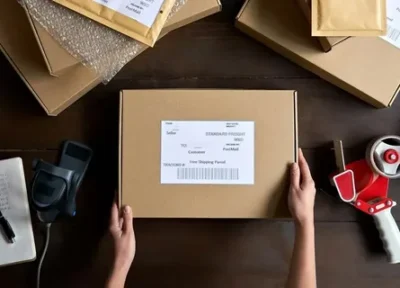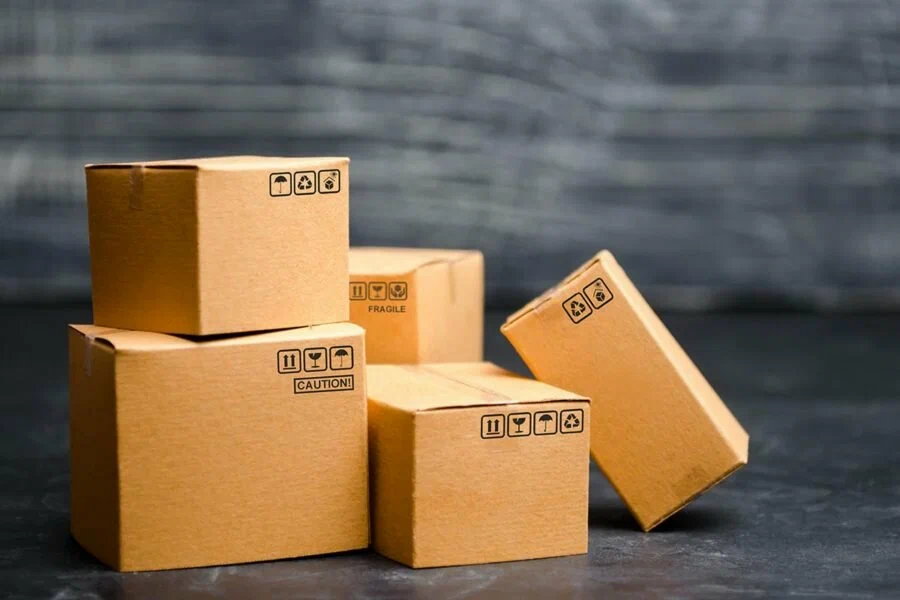In today’s fast-paced retail and consumer environment, packaging plays a crucial role in the presentation, protection, and marketing of products. Amon
In today’s fast-paced retail and consumer environment, packaging plays a crucial role in the presentation, protection, and marketing of products. Among various types of packaging, boxed packaged goods hold a significant place across multiple industries, from food and beverages to electronics and household items. This article delves into the concept of boxed packaged goods, exploring their importance, types, benefits, design considerations, and market trends.
What Are Boxed Packaged Goods?
Boxed packaged goods refer to products that are enclosed within a box or carton for sale, storage, and transportation purposes. Unlike loose or bulk items, these goods are contained within a structured, often rectangular or square, outer shell made from materials such as cardboard, corrugated fiberboard, paperboard, or even plastic composites.
The primary purpose of a box is to provide protection to the product, facilitate handling, and enhance the aesthetic appeal of the item on store shelves or during shipping. Boxed packaging also helps in branding, providing essential information such as product details, instructions, and regulatory information.
Types of Boxed Packaged Goods
Boxed packaged goods span a wide variety of products across sectors, including:
1. Food and Beverage Boxes
Commonly found in grocery stores, these include cereal boxes, snack packaging, tea and coffee cartons, frozen food boxes, and confectionery packaging. The packaging is designed to preserve freshness, prevent contamination, and provide clear nutritional information.
2. Electronics and Gadgets Boxes
Products such as smartphones, headphones, small appliances, and computer accessories are often packaged in sturdy boxes to protect delicate components and reduce damage during shipping.
3. Household and Personal Care Goods
Items like detergents, soaps, cosmetics, and personal hygiene products use boxed packaging to separate individual units, provide tamper-evident seals, and present branding clearly.
4. Toys and Games
Boxes for toys and board games often feature colorful, attractive designs to entice buyers and provide detailed product descriptions or age recommendations.
5. Pharmaceuticals and Medical Supplies
Medicines and medical devices are typically packaged in small boxes that ensure safety, maintain sterility, and include dosage instructions and warnings.
Benefits of Boxed Packaging
Protection and Preservation
One of the most vital roles of boxed packaging is to safeguard the contents from physical damage, moisture, light, and contaminants. For food products, proper packaging can extend shelf life and maintain quality.
Convenience and Handling
Boxes provide an easy way for consumers to carry, store, and use products. For retailers, boxed goods are easier to stack, display, and transport.
Branding and Marketing
A well-designed box can communicate the brand’s identity, attract attention, and influence buying decisions. It serves as a silent salesperson on the shelf, often differentiating a product from its competitors.
Information Dissemination
Boxes offer space for essential information such as ingredients, usage instructions, safety warnings, and promotional offers.
Sustainability Potential
Many modern boxed packaging solutions focus on eco-friendly materials that can be recycled or composted, addressing consumer demand for sustainable products.
Materials Used in Boxed Packaging
The choice of material depends on the product type, weight, durability needs, and environmental considerations.
Cardboard
Cardboard is a popular material for lightweight boxed goods like cereal boxes and cosmetics. It’s easy to print on and can be made from recycled fibers.
Corrugated Fiberboard
Used for heavier or fragile items, corrugated fiberboard consists of a fluted sheet sandwiched between two liners, providing extra cushioning and protection.
Paperboard
A thin, rigid paper-based material used mainly for smaller, lightweight products such as pharmaceuticals and food.
Plastic Composite Boxes
Some boxed goods incorporate plastic for durability and moisture resistance, often combined with paperboard.

Design Considerations for Boxed Packaged Goods
Structural Design
The box must be designed to fit the product snugly without excess space to avoid movement during transit. Custom inserts or partitions may be used for added protection.
Aesthetic Design
Visual appeal is crucial. Designers use color psychology, typography, imagery, and finishes (matte, gloss, embossing) to make the box attractive.
Functional Features
Boxes may include handles, tear strips, resealable flaps, or windows to enhance usability.
Compliance and Safety
Packaging must meet regulatory standards, especially in food, pharmaceutical, and chemical industries, to ensure safety and proper labeling.
Trends in Boxed Packaged Goods
Sustainable Packaging
Consumers and governments increasingly demand environmentally responsible packaging. Biodegradable, recyclable, and compostable materials are becoming standard.
Minimalist and Functional Designs
Simplified designs with clear, direct information cater to modern consumer preferences for transparency and convenience.
Smart Packaging
Technological innovations like QR codes, NFC tags, and augmented reality features are being integrated into boxes for enhanced consumer engagement.
Customization and Personalization
Brands are exploring bespoke packaging to create unique customer experiences and foster brand loyalty.
Challenges in Boxed Packaging
Cost
High-quality boxed packaging can be expensive, especially for small businesses or luxury brands aiming for premium designs.
Environmental Impact
Despite improvements, the production and disposal of boxes still contribute to environmental concerns like deforestation and waste.
Supply Chain Complexity
Packaging must be adaptable to global supply chains with varying regulatory requirements, which can complicate design and production.
Conclusion
Boxed packaged goods are a cornerstone of the modern retail experience. Their role extends beyond mere containment to include protection, marketing, information dissemination, and consumer convenience. As the marketplace evolves, so do the materials, designs, and technologies behind boxed packaging, reflecting changing consumer preferences and environmental imperatives.
Brands and manufacturers who invest in innovative, sustainable, and functional boxed packaging stand to gain competitive advantages while contributing positively to the environment and customer satisfaction.
FAQs About Boxed Packaged Goods
Q1: What distinguishes boxed packaged goods from other packaging types?
A: Boxed packaged goods specifically refer to products enclosed in rigid or semi-rigid boxes or cartons, which provide better protection and presentation compared to flexible packaging like bags or wraps.
Q2: Are boxed packages recyclable?
A: Many boxed packages, especially those made from cardboard, corrugated fiberboard, or paperboard, are recyclable. However, boxes with plastic coatings or mixed materials may require special handling.
Q3: How does boxed packaging affect product shelf life?
A: Proper boxed packaging can protect products from moisture, light, and contamination, which helps preserve freshness and extend shelf life, particularly for food and pharmaceuticals.
Q4: Can boxed packaging be customized?
A: Yes, boxes are highly customizable in terms of size, shape, color, printing, and additional features like windows or handles to suit brand identity and product requirements.
Q5: What are some common materials used for boxed packaging?
A: Cardboard, corrugated fiberboard, paperboard, and plastic composites are the most commonly used materials for boxed packaging.
Q6: Are boxed packages more expensive than other types of packaging?
A: Generally, boxed packaging can be more costly than flexible packaging due to material and production costs, but it offers advantages in protection and branding.
Q7: How are boxed goods designed for sustainability?
A: Sustainable boxed packaging uses recyclable or biodegradable materials, minimizes excess material use, and often incorporates eco-friendly inks and adhesives.
Q8: What industries rely heavily on boxed packaged goods?
A: Food and beverage, electronics, pharmaceuticals, cosmetics, toys, and household goods industries all rely significantly on boxed packaging.
Q9: How can technology enhance boxed packaging?
A: Technologies like QR codes, NFC chips, and augmented reality can be integrated into boxes to provide interactive consumer experiences, track products, and verify authenticity.
Q10: What role does packaging play in consumer purchasing decisions?
A: Packaging is often the first point of interaction with a product. Attractive, informative, and functional packaging can influence consumer choice and enhance brand loyalty.
Must Visit: spotlightlive




COMMENTS